All That Jazz
Lori Joy Peterson found her voice as an artist through jazz
BY Emory Rakestraw
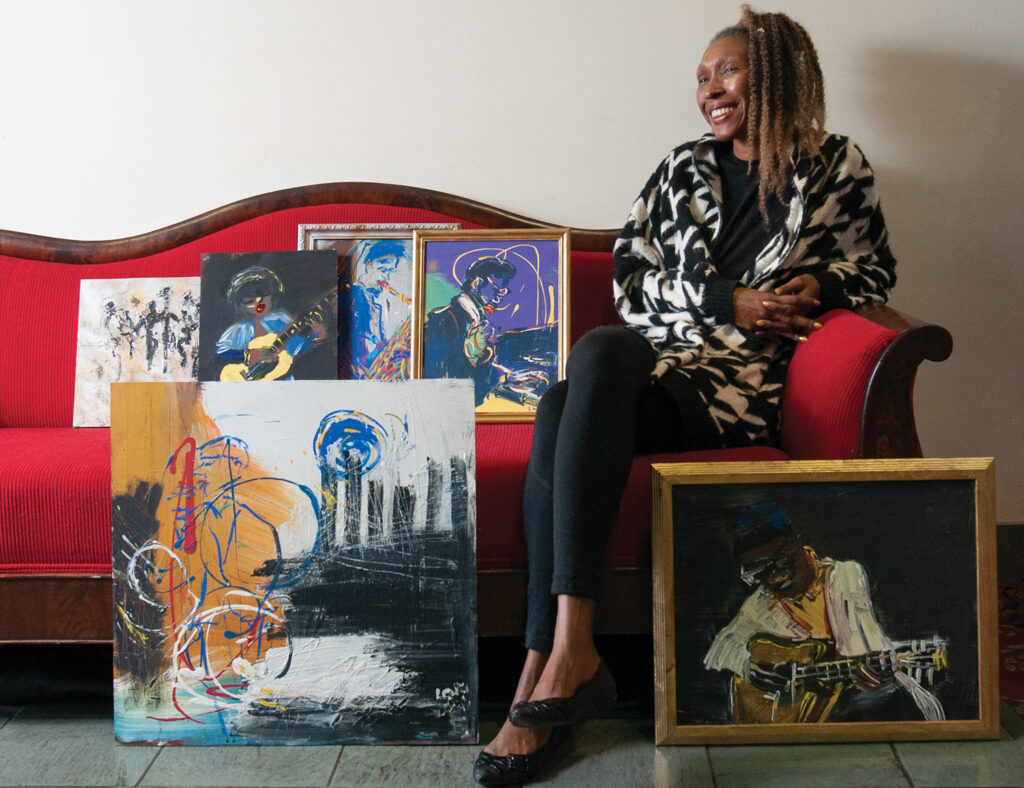
The music of Miles Davis can transport the listener to a relaxed yet spontaneous state, gliding wherever the tune might land. On the opposite end of the spectrum, sitting in nature can lead to hearing the earth’s own music — a chorus of birds, the melody of the wind.
For artist Lori Joy Peterson, both “genres” equally inspire her body of work that ebbs and flows, much like her subjects and influences.
Peterson discovered painting in her late 20s after a particularly challenging health battle. After initially focusing on realism, she unearthed her true style following a watercolor class taught by Betty Brown at Cameron Art Museum. Today, a looseness takes precedence in her watercolor and acrylic paintings through elongated brushstrokes and splashes of color.
“Watercolor is very free,” she says. “At first, I was struggling. Betty kept telling us, ‘You have to loosen up.’ Even in our drawings, her method that she taught us was to do a free sketch to start. Painting also helped me get my mind off things. It was like a diversion. Instead of feeling sorry for myself and saying, ‘Why me?’ I started saying, ‘Why not me?’”
It wasn’t until Peterson’s father passed away that she decided to turn to jazz art and really listen to the style through her own perspective instead of what was played in the house during her childhood.
“I listened to jazz growing up but did not like it. I think maybe, I wasn’t listening to my style because it was my father’s music. Once I started listening to it, I loved it. Some of my favorite artists include Miles Davis, Eric Dolphy, Charles Mingus and John Coltrane,” she says. “When I do my jazz paintings, I listen to jazz; the brushstrokes are to the beat of the music.”
While her accolades include the 2013 Wilmington Art Association’s featured cover artist, her “Queens in Motion” solo exhibition in 2018, and being a featured artist at the North Carolina Jazz Festival, Peterson’s first forays into the art world weren’t met with immediate success. Her early recollections include critiques and a lot of rejection.
Yet, instead of taking the negativity and letting it become her, she asked how she could get better. Self-taught, she sought improvement through classes on color theory and plenty of at-home trial-and-error.
One thing Peterson sticks to is her mantra of painting every day.
“When I first started, I would search for opportunities,” she says. “I encountered a lot of rejection, but I’m stubborn. In my mind, I knew I was going to be an artist. A lot of gallery owners would tell me I wasn’t ready, so I’d ask why. I still paint every day. I’ll come up with an idea, I’ll sketch it out and really think about it. Since I’ve already thought about it, it won’t take me hours to paint. I’ve already spent hours sketching it and sometimes the ideas just come to me, and I’ll run with them.”
In her painting of Miles Davis, there’s stark splashes of red and bursts of black. Davis is focused on what he does best — playing the trumpet. The viewer can easily imagine the sounds of a slow burning trumpet and the soothing background of a piano and drumbeat.
While some of Peterson’s paintings employ the use of background colors, others take a simpler route. In one piece from her jazz series, nondescript musicians make up a quartet, their silhouettes in stark black with yellow highlights that recall the jolting sound of an instrument amid a dimly lit jazz bar.
For Peterson, the less realistic the better. Even her self-portraits impose a subjective meaning, be it in capturing an early morning mood or a wandering gaze with a hand resting on her cheek.
“I love to play dress-up and take photos of myself to inspire the self-portraits,” she says. “My friends think I’m goofy but also, they know me. I like things that are perfectly imperfect. I try to experiment and see what works, Ironically, one day I was sitting in my bedroom thinking of ideas and UNCW emailed me to inquire about displaying my self-portraits. Now they’re hanging in the library on campus.”
While her first art love will always be jazz, she’s found a new subject that equally captures her heart — birds. It came to her one day while sitting outside. Much like the rhythm of jazz, birds possess that same freedom and flow. Using picture references, Peterson seeks to capture the unique tune of nature.
“A friend of mine likes birds and I just took to them,” she says. “Oddly enough, people like my jazz series but I’ll post the birds on my social media, and they just fly. I’ve really enjoyed it and I am trying to learn more about the different types of birds as well.”
Peterson often sets the bird on a twig with a watercolor background, sometimes in blue and sometimes in bright yellow. Flowers are added via sketch, then a blot of rich color outside the lines creates a splash of unchained nature. The birds are not confined to a specific setting and instead float freely within the painting.
Peterson’s loose style mixed with the flow of watercolor meshes organically. While bird watchers might expect her to create each image to perfect likeness, she enjoys having an idea that then becomes her own.
Much like the lyrical and introspective nature of Davis’ music, nature sings a similar tune. There’s a quiet solitude that is then interrupted by a bird’s shrill yet melodic call.
Be it a self-portrait, jazz painting or a pair of birds, Peterson will always find rhythm and emotion when it comes time to paint, communicating her own unique tune through a brush and canvas.
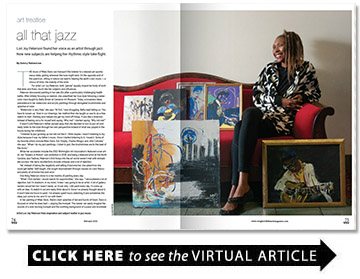
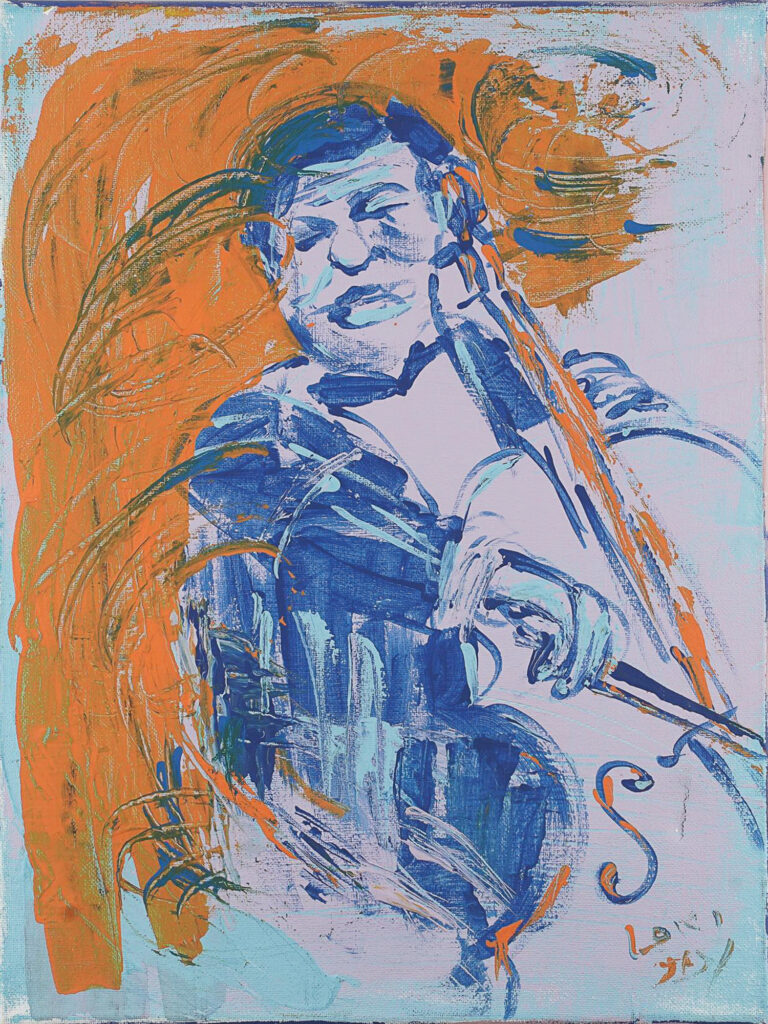
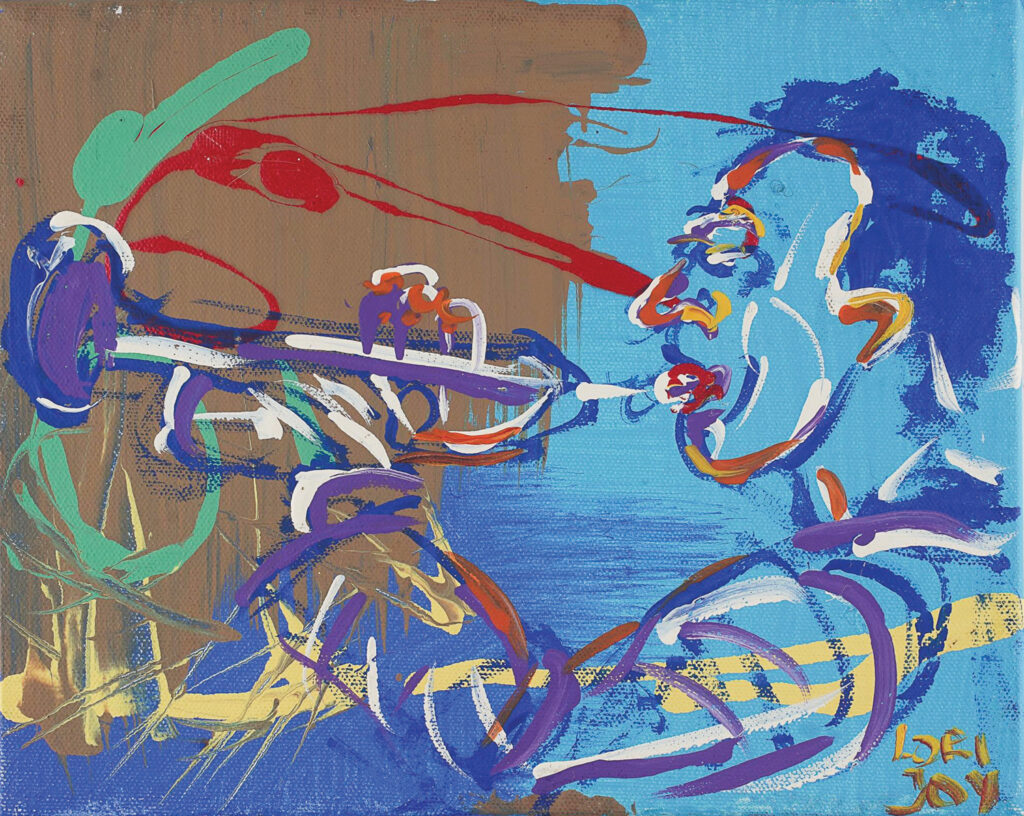
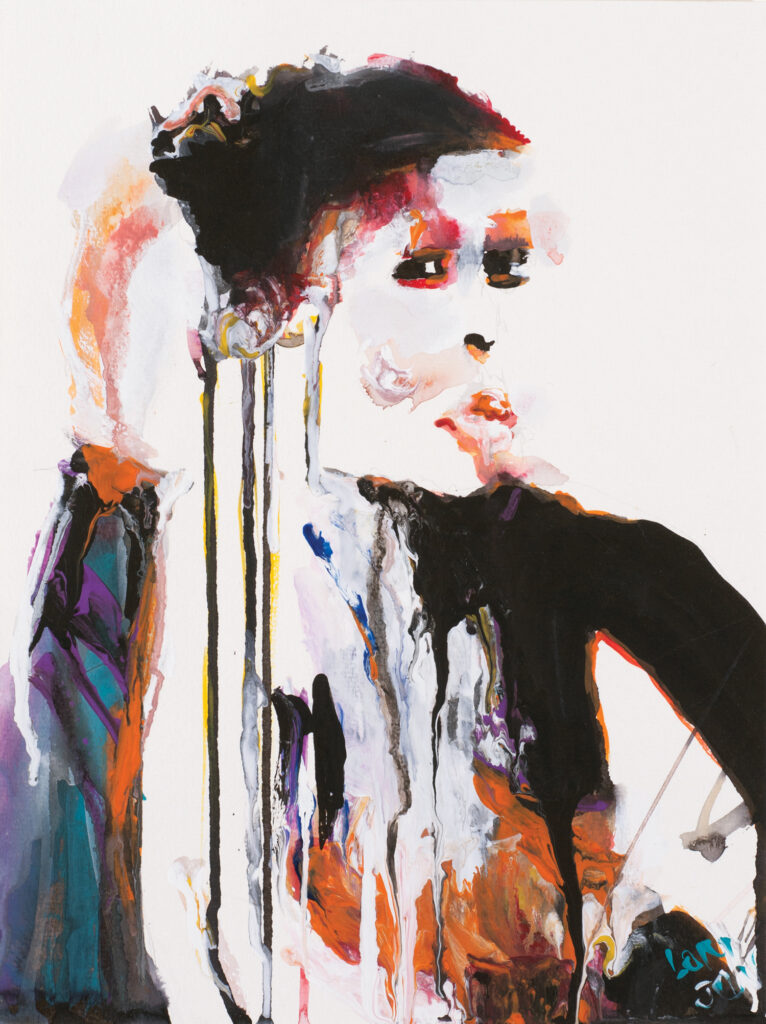
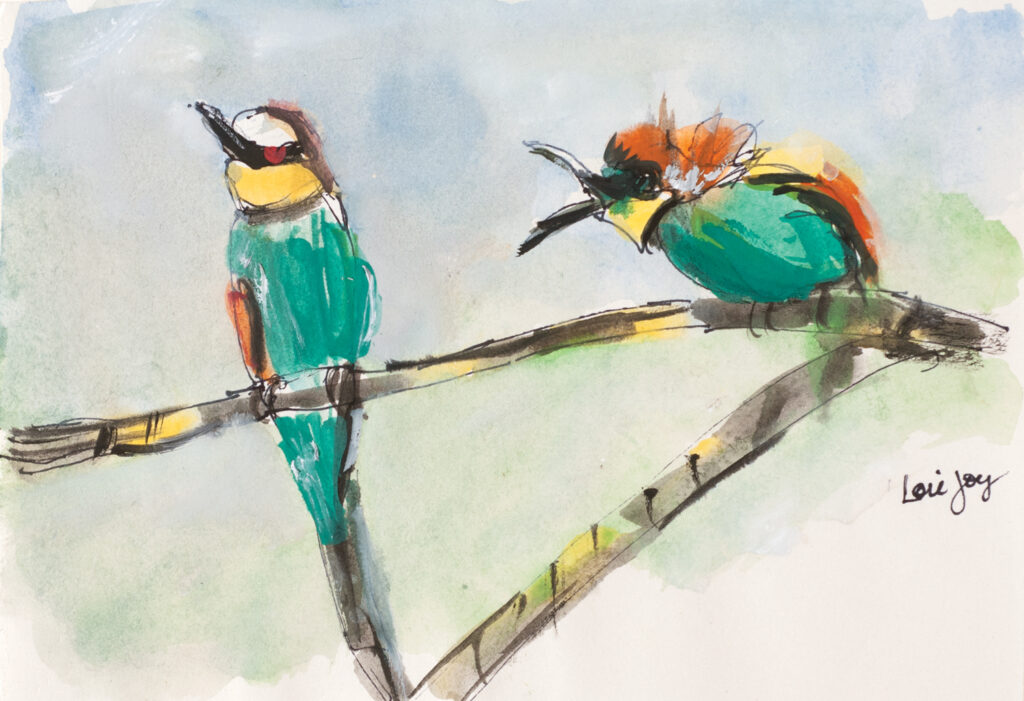
How can I purchase her art?